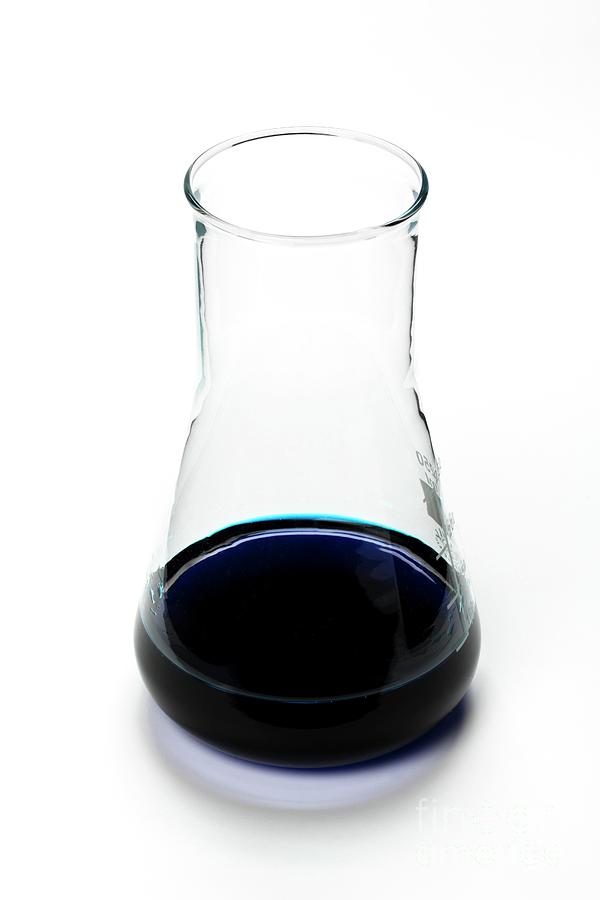Determination of sulfur dioxide in wine
1/28
Earn XP
Description and Tags
Standardization of iodine solution against ascorbic acid. Determination of sulfur dioxide in wine by iodometric titration. Determination of free, bound and total sulfur dioxide.
Name | Mastery | Learn | Test | Matching | Spaced |
|---|
No study sessions yet.
29 Terms
Sulfur Dioxide (SO2)
A gas used as a preservative in wine, serving as both an antimicrobial substance and an antioxidant. It can be injected in liquid form or dissolved in cold water to form solutions.
Free Sulfur Dioxide
The form of sulfur dioxide that includes water-soluble sulfur dioxide and undissociated sulfurous acid, making up about 28% of the total sulfur dioxide in wine.
Bound Sulfur Dioxide
Sulfur dioxide that has reacted with other compounds, such as acetaldehyde or sugars, and is less readily available as free sulfur dioxide.
Total Sulfur Dioxide
The sum of free and bound sulfur dioxide in wine, determined by titration after alkaline hydrolysis.
Sodium Metabisulfite (Na2S2O5)
A compound that, when dissolved in water, yields active sulfur dioxide and is commonly used in winemaking.
Potassium Metabisulfite (K2S2O5)
Another sulfite used in winemaking, yielding active sulfur dioxide similar to sodium metabisulfite.
Acetaldehyde-sulfur dioxide Complex
The predominant form of bound sulfur dioxide in wine, making up about 80% of the bound sulfur dioxide.
Sulfurous Acid (H2SO3)
Formed when sulfur dioxide dissolves in water; it can dissociate into bisulfite (HSO3-) and sulfite (SO32-) ions.
Antimicrobial Properties of sulfur dioxide
Sulfur dioxide inhibits the growth of molds, bacteria, and wild yeasts, particularly effective in lower pH environments.
Titration
A laboratory technique where a solution of known concentration is used to determine the concentration of an unknown solution.
Equivalence Point
The point in a titration where the amount of titrant added is stoichiometrically equivalent to the amount of substance being titrated.
Endpoint
The point in a titration where the indicator changes color, signaling that the titration is complete, often near the equivalence point.
Volumetric solution
A solution of known concentration used in titrations. Its concentration is usually determined using a primary standard.
Standardization
The process of determining the exact concentration of a solution by titration with a standard solution of known concentration.
Primary Standard
A highly pure substance that can be used to determine the concentration of a solution in titration, due to its stability and known reactivity.
Iodometric Titration
A method used to determine the amount of sulfur dioxide in wine by titrating with iodine solution and using starch as an indicator.
Preparation of Iodine Solution
Involves dissolving sublimated iodine in potassium iodide solution and diluting it with distilled water. Reaction scheme: I2 + I- → I3-
Potassium Iodide (KI)
Used in the preparation of iodine solutions by forming triiodide ions, which dissolve iodine in water. Reaction scheme: I2 + I- → I3-
Ascorbic Acid
Used as a standard in the iodometric titration to determine the concentration of iodine solution.
Redox Indicator
A chemical compound that changes color at a particular oxidation state, used to signal the endpoint in redox titrations, such as the color change of starch with iodine.
Starch Indicator
A substance used in iodometric titrations to detect the endpoint, indicated by a persistent blue color.

Standardization of Iodine Solution
The process of titrating a known solution of ascorbic acid with iodine to determine the exact concentration of the iodine solution.
Determination of Free Sulfur Dioxide
The process of titrating a wine sample with iodine solution in the presence of starch indicator to measure the amount of free sulfur dioxide, which reacts directly with the iodine.
Determination of Bound Sulfur Dioxide
Involves treating a wine sample with sodium hydroxide to release sulfur dioxide from its bound form, followed by titration with iodine to measure the total sulfur dioxide present.
Determination of Total Sulfur Dioxide
The sum of free and bound sulfur dioxide determined by titrating the sample after alkaline hydrolysis, which converts bound sulfur dioxide to free dioxide , allowing for its measurement.
Reaction Scheme of Sulfur Dioxide with Iodine
In this redox reaction, sulfur dioxide is oxidized to sulfuric acid, and iodine is reduced to hydrogen iodide. Reaction scheme: SO2 + I2 + 2H2O → H2SO4 + 2HI
Sodium Hydroxide (NaOH)
Used in the determination of total sulfur dioxide in wine by hydrolyzing bound sulfur dioxide to release free sulfur dioxide for titration.
Hazard Statements for Iodine
Includes risks such as skin and eye irritation, respiratory irritation, and environmental toxicity.
Safety Precautions for sodium hydroxide
Requires protective equipment due to its corrosive nature, causing severe skin burns and eye damage.